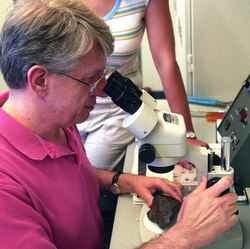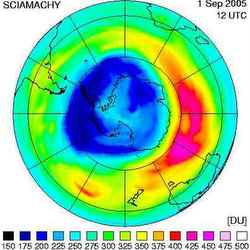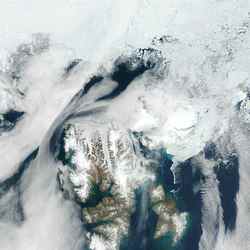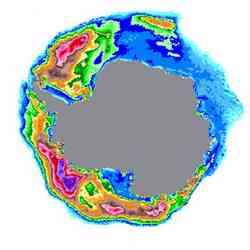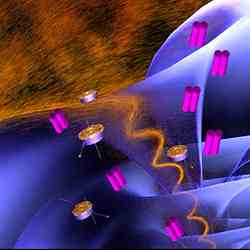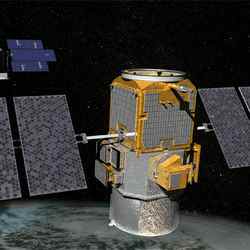
Artist’s concept of CloudSat and Calipso orbiting Earth. Image credit: NASA Click to enlarge
Two NASA satellites, planned for launch no earlier than Oct. 26, will give us a unique view of Earth’s atmosphere. CloudSat and Cloud-Aerosol Lidar and Infrared Pathfinder Satellite Observations (Calipso) are undergoing final preparations for launch from Vandenberg Air Force Base, Calif.
CloudSat and Calipso will provide a new, 3-D perspective on Earth’s clouds and airborne particles called aerosols. The satellites will answer questions about how clouds and aerosols form, evolve and affect water supply, climate, weather and air quality.
CloudSat and Calipso employ revolutionary tools that will probe Earth’s atmosphere. Each spacecraft carries an “active” instrument that transmits pulses of energy and measures the portion of the pulses scattered back to the instrument.
CloudSat’s cloud-profiling radar is more than 1,000 times more sensitive than typical weather radar. It can detect clouds and distinguish between cloud particles and precipitation. “The new information from CloudSat will answer basic questions about how rain and snow are produced by clouds, how rain and snow are distributed worldwide and how clouds affect the Earth’s climate,” said Dr. Graeme Stephens, CloudSat principal investigator at Colorado State University, Fort Collins, Colo.
Calipso’s polarization lidar instrument can detect aerosol particles and can distinguish between aerosol and cloud particles. “With the high resolution observation that Calipso will provide, we will get a better understanding of aerosol transport and how our climate system works,” said Dr. David Winker, Calipso principal investigator at NASA’s Langley Research Center, Hampton, Va.
The satellites will be launched into a 705-kilometer (438-mile) circular, sun-synchronous polar orbit, where they will fly in formation just 15 seconds apart as members of NASA’s “A-Train” constellation with three other Earth Observing System satellites. The A-Train includes NASA’s Aqua and Aura satellites and France’s Polarization and Anisotropy of Reflectances for Atmospheric Sciences coupled with observations from a Lidar satellite.
The usefulness of data from CloudSat, Calipso and the other A-Train satellites will be much greater when combined. The combined set of measurements will provide new insight into the global distribution and evolution of clouds that will lead to improvements in weather forecasting and climate prediction.
CloudSat is managed by NASA’s Jet Propulsion Laboratory, Pasadena, Calif. The radar instrument was developed at JPL, with hardware contributions from the Canadian Space Agency. Colorado State University provides scientific leadership and science data processing and distribution.
Other contributions include resources from the U.S. Air Force and the U.S. Department of Energy. Ball Aerospace and Technologies Corp. designed and built the spacecraft. A host of U.S. and international universities and research centers provides support to the science team. Some of these activities are contributed as partnerships with the project.
Calipso was developed through collaboration between NASA and the French Space Agency, Centre National d’Etudes Spatiales. NASA’s Langley Research Center leads the Calipso mission and provides science team leadership, systems engineering, payload mission operations, and validation, processing and archiving of data. Langley also developed the lidar instrument in collaboration with the Ball Aerospace and Technologies Corp., which developed the onboard visible camera.
NASA’s Goddard Space Flight Center, Greenbelt, Md., provides project management, system engineering support and overall program management. Centre National d’Etudes Spatiales provides a Proteus spacecraft developed by Alcatel, the imaging infrared radiometer, payload-to-spacecraft integration and spacecraft mission operations. The Institut Pierre Simon Laplace in Paris provides the imaging infrared radiometer science oversight, data validation and archival. Hampton University provides scientific contributions and manages the outreach program.
For more information on CloudSat and Calipso on the Internet, please visit http://www.nasa.gov/cloudsat and http://www.nasa.gov/calipso .
Original Source: NASA News Release

